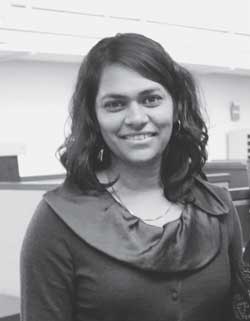Lalitha Vasudevan: Toward a Multimodal Stance in Pedagogy
Educators can no longer engage students by print or linguistic means alone
A young man bounds into class 15 minutes early, a bright grin on his face. He sloughs off his leather jacket, pushes up the sleeves of his oatmeal-colored thermal Henley shirt, and pulls a PlayStation Portable (PSP) out of his pocket. He connects the device to a laptop, clicks on the icon for iMovie, and plugs in his headphones. His grin widens. The tracks he composed at home using an audio editing program have transferred without incident. He’s ready to work on his film.
As a researcher and teacher, I have spent more than 15 years working with adolescents inside and outside of school, and I have consistently been impressed by their unyielding spirit of inquiry, exploration and discovery—whether they are in the classroom, mastering a video game, or listening to family stories.
Just as the former student of mine, described above, turned a handheld video game into a tool for data transfer, today’s youth are routinely changing the digital and communicative landscapes through which they maneuver. So, too, must educators be inventive, changing their practices of seeing and knowing students in order to better support their educational experiences. They must actively engage the knowledge that students bring into the classroom by providing ways for them to demonstrate proficiency through multiple modes and media rather than by print or linguistic means alone. This doesn’t mean transforming classrooms into video arcades. But it does mean treating the mobile phone as a site of educational exploration rather than a distraction, or perhaps adapting practices such as texting and the use of handheld devices to work with curricular goals.
Such a multimodal stance in pedagogy can help to bridge the real digital divide in classrooms today: the lack of opportunities for youth to be seen as digitally fluent. Educators must constantly look closely so that we might see differently. As the novelist Henry Miller observed: “The moment one gives close attention to any thing, even a blade of grass, it becomes a mysterious, awesome, indescribably magnificent world in itself.”tc
Lalitha Vasudevan is Associate Professor of Technology and Education.
Published Tuesday, May. 1, 2012
